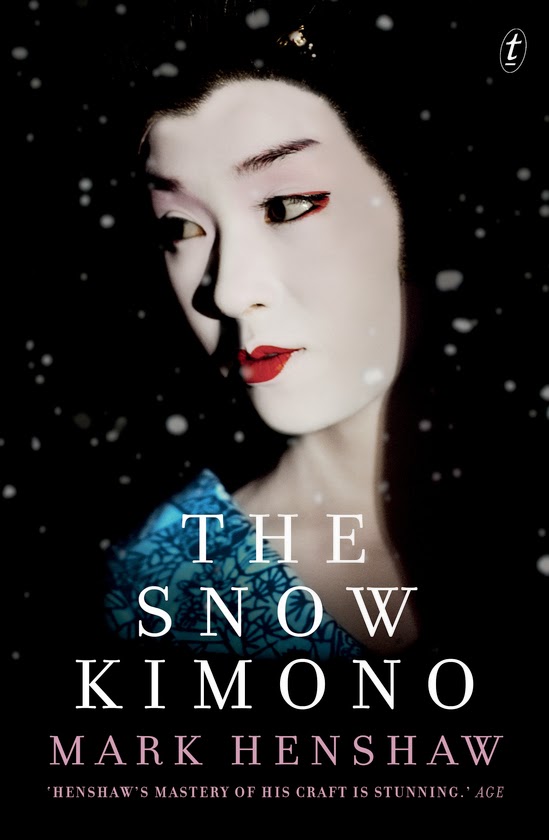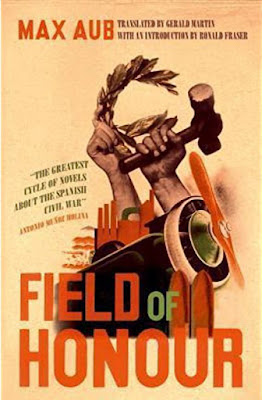The Snow Kimono
Mark Henshaw's The Snow Kimono begins in a deceptively straightforward manner with the introduction of Auguste Jovert, former police inspector, now retired Parisian. He meets a Japanese man of his age who introduces himself as Tadashi Omura, a former professor of law, now resident of the same apartment block as Jovert. Henshaw utitlises an omniscient narrative technique that allows him to move between storytellers with ease. For example, Omura's narrative, begins as such: 'One afternoon, Omura was saying, I decided to take Fumiko to see her mother's grave' (p.10). The next six or seven pages follow this line, and then we are reminded of Jovert's place as listener in the present: 'Jovert sat looking across at [Omura]' (p.17).
So far, so good, as we learn of Omura's love for his adopted daughter (or the girl he has brought up as his own, from the age of three). Things get complicated from here, so that it is in many ways hard to distil; Omura tells of his childhood friend, Katsuo Ikeda, a somewhat self-destructive but brilliant young writer and the real father of Fumiko. The question of daughters and fathers is echoed in a separate quest of Jovert's, who has recently been contacted by a woman claiming to be his daughter from his time in Algiers during the war or revolt, depending on your perspective, when he worked in a rather duplicitous capacity for the army, to identify trouble-makers and revolutionaries.
Moving between the lives of three main characters and their relationships creates challenges for the reader, and I found myself re-reading some sections to make sense of all this. Because the editing is crisp and the writing is engaging and pleasurable, I didn't mind - though I suspect that the novel will alienate some readers in the process of weaving together stories, memories, and narrative voices (some of which are unreliable and deliberately so). How an Australian writer can create a Japanese story distilled through French eyes and still produce a novel that feels like it belongs on these shores and elsewhere, too - that's an impressive feat. In technical terms, the movement between times, places and character stories is a little like Peter Carey's latest novel, Amnesia - though the location and distinctly Australian voices in Amnesia means there is no comparable cultural ambivalence. This said, other Carey novels are set in far-away places with non-Australian characters, and Australian writers have always claimed the right to roam in their collective imaginations.
So far, so good, as we learn of Omura's love for his adopted daughter (or the girl he has brought up as his own, from the age of three). Things get complicated from here, so that it is in many ways hard to distil; Omura tells of his childhood friend, Katsuo Ikeda, a somewhat self-destructive but brilliant young writer and the real father of Fumiko. The question of daughters and fathers is echoed in a separate quest of Jovert's, who has recently been contacted by a woman claiming to be his daughter from his time in Algiers during the war or revolt, depending on your perspective, when he worked in a rather duplicitous capacity for the army, to identify trouble-makers and revolutionaries.
Moving between the lives of three main characters and their relationships creates challenges for the reader, and I found myself re-reading some sections to make sense of all this. Because the editing is crisp and the writing is engaging and pleasurable, I didn't mind - though I suspect that the novel will alienate some readers in the process of weaving together stories, memories, and narrative voices (some of which are unreliable and deliberately so). How an Australian writer can create a Japanese story distilled through French eyes and still produce a novel that feels like it belongs on these shores and elsewhere, too - that's an impressive feat. In technical terms, the movement between times, places and character stories is a little like Peter Carey's latest novel, Amnesia - though the location and distinctly Australian voices in Amnesia means there is no comparable cultural ambivalence. This said, other Carey novels are set in far-away places with non-Australian characters, and Australian writers have always claimed the right to roam in their collective imaginations.




Comments
Post a Comment